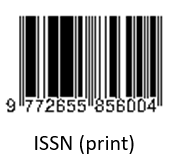Mobile Forensic Investigation on iOS & Android Smartphones: Case Study Investigation on WhatsApp
(1) Shadi K. A. Zakarneh is a computer systems engineer. He was graduated, in 1999, from Palestine polytechnic university (www.ppu.edu) in Hebron, Palestine. He has experience in computer networking, programming, and information security. He is now the general director of the information technology directorate in the Palestinian Anti-corruption commission (www.pacc.ps). He is now a master's degree in Science in Cybercrimes & Digital Evidence Analysis program at Palestine technical university – Kadoorie (www.ptuk.edu.ps) in Tulkarem, Palestine.
(*) Corresponding Author
Abstract
Following the exponential growth of information and communication technologies, the smartphone market, as well as advances in wireless data networks (3G and 4G), has accelerated. Mobile apps for social networking and instant messaging have been created by these firms. Other instant messaging (IM) smartphone programs like WhatsApp (WA), Viber, and IMO have also been created. WA is the most widely used instant messaging program. With WA, you can send and receive messages in a variety of formats, including text, voice, video, and documents. Various cybercrime incidents were committed through WA's. WA use leaves several artifacts that may be examined to detect the digital evidence. In addition, iOS and Android are two of the most popular smartphone operating systems. Because of this, the inquiry will involve the use of forensic investigative techniques and methodologies. Forensics on both iOS and Android cellphones were utilized to investigate a digital crime that was believed to have been perpetrated in WA. To conclude the investigation, we analyzed chat logs, phone records, and other media to gather proof. Legal framework and established processes were used to guarantee that evidence was preserved from change or destruction and that the witness's account was acceptable in court throughout the investigative process. It was finally stated that the inquiry and evidence had been presented. As a result, WA forensic artifacts might be evaluated and found effectively utilizing the mobile forensic procedure.
Full Text:
PDFReferences
E. S. Han and A. goleman, daniel; boyatzis, Richard; Mckee, “IS WHATSAPP THE FUTURE OF WORKPLACE COMMUNICATION?: INVESTIGATING THE USE OF WHATSAPP IN DECISION- MAKING EPISODES,” J. Chem. Inf. Model., vol. 53, no. 9, pp. 1689–1699, 2019.
R. Umar, I. Riadi, and G. M. Zamroni, “Mobile forensic tools evaluation for digital crime investigation,” Int. J. Adv. Sci. Eng. Inf. Technol., vol. 8, no. 3, pp. 949–955, 2018, doi: 10.18517/ijaseit.8.3.3591.
Ubaidillah et al., “Analysis whatsapp forensic and visualization in android smartphone with support vector machine (SVM) Method,” J. Phys. Conf. Ser., vol. 1196, no. 1, 2019, doi: 10.1088/1742-6596/1196/1/012064.
J. Clement, “Most popular global mobile messaging apps 2020,” Statista, 2020. https://www.statista.com/statistics/307143/growth-of-whatsapp-usage-worldwide/ (accessed Apr. 20, 2021).
I. Abdulai Sawaneh, “Examining the Effects and Challenges of Cybercrime and Cyber Security Within the Cyberspace of Sierra Leone,” Int. J. Intell. Inf. Syst., vol. 7, no. 3, p. 23, 2018, doi: 10.11648/j.ijiis.20180703.11.
FBI’s Internet Crime Complaint Center, “2019 Internet Crime Report,” 2019 Internet Crime Rep., pp. 1–28, 2019, [Online]. Available: https://pdf.ic3.gov/2019_IC3Report.pdf.
A. Shahbazi, “Technological developments in cyberspace and commission of the crimes in international law and Iran,” J. Leg. Ethical Regul. Issues, vol. 22, no. 4, pp. 1–12, 2019.
PNA, “Law by Decree No. 10 of 2018 on Cybercrime,” no. 10. pp. 1–15, 2018.
S. AlHidaifi, “Mobile Forensics: Android Platforms and WhatsApp Extraction Tools,” Int. J. Comput. Appl., vol. 179, no. 47, pp. 25–29, 2018, doi: 10.5120/ijca2018917264.
R. Gyorödi, D. Zmaranda, V. Georgian, and C. Gyorödi, “A Comparative Study between Applications Developed for Android and iOS,” Int. J. Adv. Comput. Sci. Appl., vol. 8, no. 11, 2017, doi: 10.14569/ijacsa.2017.081123.
F. Aleem, “Layered Architecture used by iOS and its Performance & Portability,” 2019, no. July, pp. 0–19, doi: 10.13140/RG.2.2.22845.20968.
C. Parth, J. Tamanna, and A. Animesh Kumar, “Comparative analysis of mobile forensic proprietary tools: an application in forensic investigation,” J. Forensic Sci. Res., vol. 6, no. 1, pp. 077–082, 2022, doi: 10.29328/journal.jfsr.1001039.
D. Afonin, I. Hora, V. Kolesnyk, I. Popovych, and I. Kuchynska, “On the possibilities of using some modern three-dimensional modeling means in forensic examination,” J. Forensic Sci. Med., vol. 8, no. 1, pp. 17–23, 2022, doi: 10.4103/jfsm.jfsm_57_21.
Rupesh, “iOS Layered Architecture,” 2017. https://codeingwithios.blogspot.com/2017/09/ios-layered-architecture.html (accessed May 22, 2021).
Studytonight, “Android Architecture - Software Stack of Android,” Studytonight Technologies Pvt. Ltd, 2020. https://www.studytonight.com/android/android-architecture# (accessed Dec. 27, 2020).
N. Ekanayake, “Android Operating System,” no. July, pp. 1–11, 2018, doi: 10.13140/RG.2.2.20829.72169.
J. Khan and S. Shahzad, “Android Architecture and Related Security Risks,” Asian J. Technol. Manag. Res., vol. 05, no. December 2015, pp. 2249–892, 2016.
S. Udenze and B. Oshionebo, “Investigating ‘WhatsApp’ for Collaborative Learning among Undergraduates,” Etkileşim, vol. 3, no. 5, pp. 24–50, 2020, doi: 10.32739/etkilesim.2020.5.92.
H. Shidek, N. Cahyani, and A. A. Wardana, “WhatsApp Chat Visualizer: A Visualization of WhatsApp Messenger’s Artifact Using the Timeline Method,” Int. J. Inf. Commun. Technol., vol. 6, no. 1, p. 1, 2020, doi: 10.21108/ijoict.2020.61.489.
J. K. Alhassan, B. Abubakar, M. Olalere, M. Abdulhamid, and S. Ahmad, “Forensic Acquisition of Data from a Crypt 12 Encrypted Database of Whatsapp,” 2 nd Int. Eng. Conf., no. October, 2017.
G. L. Jhala KY, “WhatsApp Forensics: Decryption of Encrypted WhatsApp Databases on Non Rooted Android Devices,” J. Inf. Technol. Softw. Eng., vol. 05, no. 02, pp. 2–5, 2015, doi: 10.4172/2165-7866.1000147.
DOI: https://doi.org/10.24071/ijasst.v6i1.6770
Refbacks
Publisher : Faculty of Science and Technology
Society/Institution : Sanata Dharma University

This work is licensed under a Creative Commons Attribution 4.0 International License.











